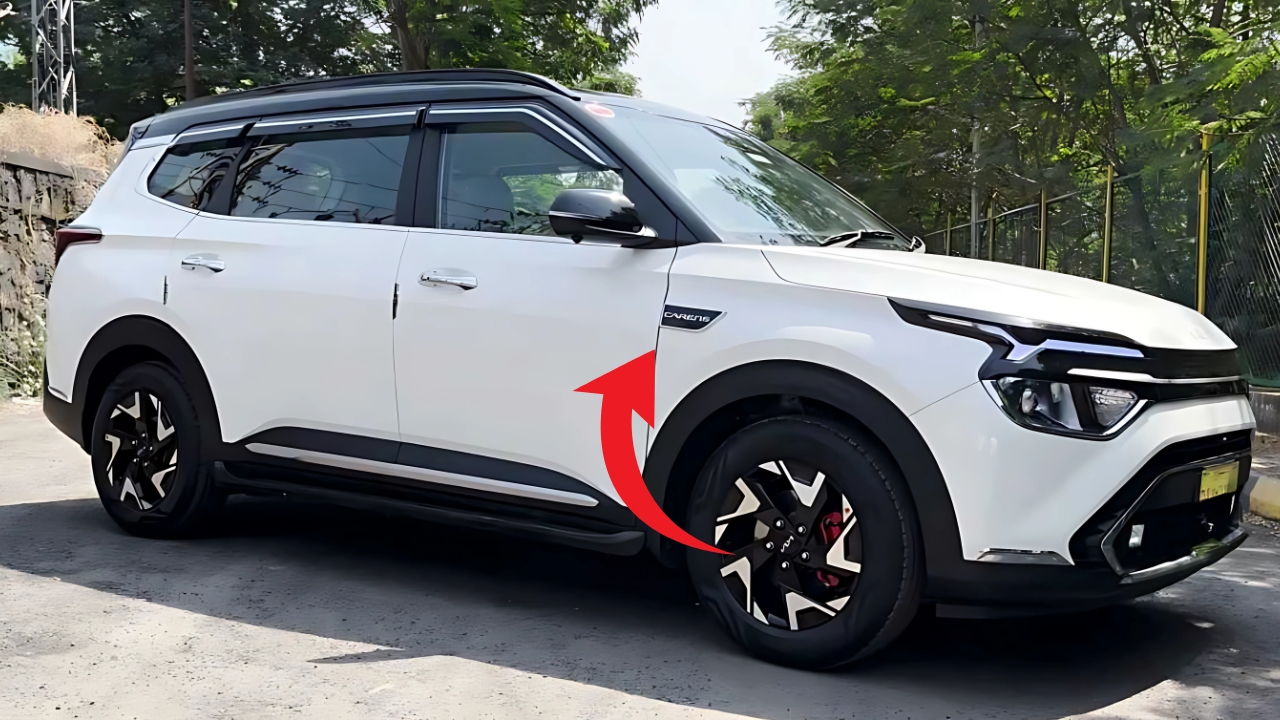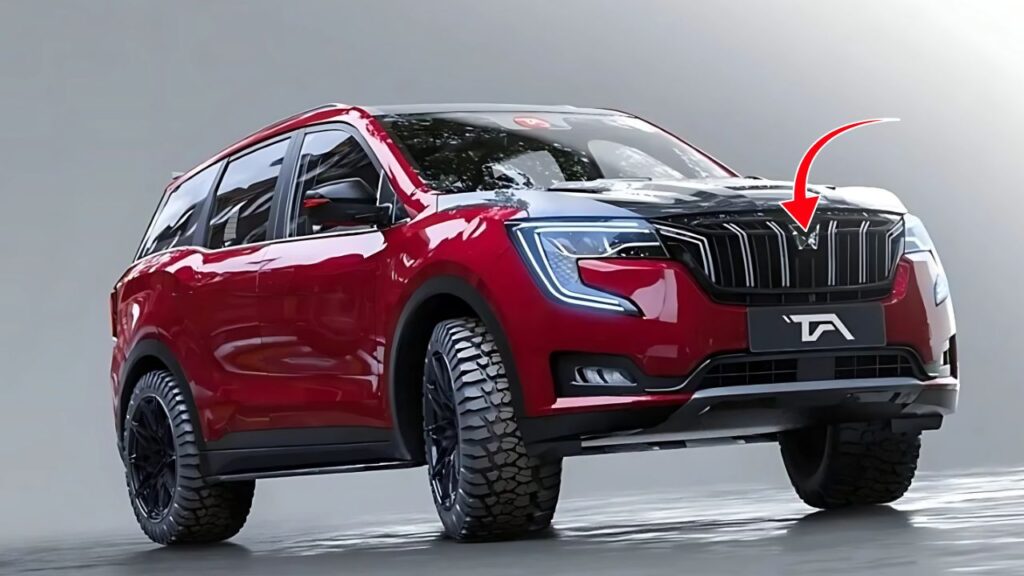Kia Carens: In the complex and rapidly evolving landscape of India’s automotive market, few segments have witnessed as much transformation as the family mobility space.
Traditionally dominated by conventional MPVs (Multi-Purpose Vehicles) and increasingly challenged by three-row SUVs, this category serves the practical needs of extended families and those requiring versatile seating configurations.
The Kia Carens, introduced in 2022, represents a fascinating response to this evolving market dynamic – one that deliberately blurs established segment boundaries while addressing specific Indian requirements with thoughtful design and feature integration.
Neither a traditional MPV nor a conventional SUV, the Carens embodies Kia’s strategic approach to creating a distinctive product offering that transcends easy categorization.
Table of Contents
Kia Carens: Strategic Positioning: Beyond Conventional Categories

Understanding the Carens requires first appreciating its strategic intent within both Kia’s portfolio and the broader market context.
With the Seltos and Sonet already established as successful entries in the compact and sub-compact SUV segments respectively, Kia recognized an opportunity to address the family vehicle space with a product that would complement rather than cannibalize its existing lineup.
However, rather than creating a conventional MPV in the mold of segment stalwarts like the Toyota Innova or Maruti Suzuki Ertiga, Kia opted for a more nuanced approach that would appeal to buyers increasingly drawn to SUV styling cues while maintaining the practical advantages of an MPV format.
The resulting product deliberately eschews rigid segment classification, with Kia themselves describing the Carens as a “recreational vehicle” rather than explicitly labeling it an MPV or SUV.
This strategic ambiguity allows the Carens to appeal to multiple buyer profiles: those who need three-row practicality but find traditional MPVs too utilitarian in appearance; SUV enthusiasts who require more interior versatility than most crossovers can offer; and family buyers seeking a contemporary alternative to established options.
By introducing the Carens at a starting point significantly below premium MPVs like the Innova Crysta while offering higher-end variants that overlap with three-row SUVs such as the MG Hector Plus and Tata Safari, Kia created a wide spectrum of options that can address diverse budget considerations while maintaining consistent core attributes across the range.
Design Approach: Practical Sophistication
The Carens’ exterior design represents a thoughtful balance between aesthetic appeal and functional requirements.
While incorporating sufficient SUV-inspired elements to satisfy contemporary market preferences – including a raised stance, prominent grille, and protective cladding along the lower body – the overall proportions remain true to the space-efficient packaging that defines successful family vehicles.
The front fascia establishes a distinctive identity through Kia’s “Tiger Face” design language, albeit with unique execution specific to the Carens.
The LED headlamps feature a distinctive star-map inspired daytime running light signature that creates immediate visual recognition, while the connected light bar across the width of the vehicle visually emphasizes its substantial presence.
Unlike some competitors that attempt to disguise their practical nature with aggressively raked profiles or dramatically flared fenders, the Carens embraces a more honest approach where exterior design serves interior accommodation rather than compromising it.
This design philosophy continues along the profile, where the extended wheelbase (2,780mm) and optimized proportions maximize interior volume while maintaining balanced aesthetics.
The relatively upright greenhouse ensures excellent headroom across all three rows, while thoughtful details like the quarter glass at the third row demonstrate consideration for all passengers’ comfort and visibility – an important factor for Indian families where the third row frequently accommodates adults rather than only occasional child usage.
The rear design completes this cohesive approach with horizontally oriented LED tail lamps connected by a light bar, creating visual width while maintaining a clean, uncluttered appearance.
The tailgate opening prioritizes practical access to the cargo area, with a relatively low lift-over height that facilitates loading heavy or awkward items.
Color strategy plays a significant role in positioning the Carens as a more lifestyle-oriented option than traditional MPVs.
Beyond conventional silvers and whites, options like Imperial Blue, Moss Brown, and Sparkling Silver with Aurora Black Pearl roof allow for personalization that acknowledges the vehicle’s role as both a practical family mover and a reflection of owner identity – a consideration often overlooked in the traditional MPV segment where functionality historically dominated over emotional appeal.
Interior Experience: Thoughtful Versatility
Where the Carens truly distinguishes itself is in its interior execution – an area where Kia has introduced several segment-first features and thoughtful touches that enhance the practical versatility expected in a family vehicle.
The fundamental architecture employs a three-row, seven-seat configuration as standard, with a six-seat option featuring second-row captain’s chairs available on higher trims.
The dashboard design balances contemporary aesthetics with practical functionality through a layered approach that creates visual interest without compromising usability.
The 10.25-inch touchscreen infotainment system is positioned at an optimal height for visibility while driving, complemented by a digital instrument cluster of similar dimensions that provides customizable information displays.
Physical controls for climate functions maintain intuitive operation without diving through touch menus – an important consideration for a family vehicle where driver distraction is a particular concern.
Material selection demonstrates an understanding of family usage patterns, with stain-resistant fabrics and durable touch surfaces in areas likely to see heavy use, balanced with softer materials at primary contact points to maintain a premium feel.
The overall effect creates an atmosphere that feels sophisticated without inducing anxiety about maintaining pristine conditions – a practical recognition that family vehicles inevitably experience spills, scuffs, and general wear through normal use.
Seating comfort across all three rows receives particular attention, addressing a common shortcoming in the segment where third-row accommodation often feels like an afterthought.
The front seats feature ventilation on higher trims – a valuable feature in India’s climate – while the second row offers adjustable recline angles, integrated sunshades, and seat-back tables with integrated cup holders that enhance versatility for different usage scenarios from family road trips to mobile workspaces.
Most notably, the third row defies the conventional “punishment seat” approach of many competitors, offering reasonable comfort for adult passengers through proper cushioning, recline adjustment, and dedicated air conditioning vents.
The 60:40 split configuration allows for flexible cargo and passenger arrangements, while the one-touch tumble mechanism for second-row seats facilitates easy access – a seemingly minor detail that significantly enhances everyday usability.
Storage solutions throughout the cabin demonstrate careful consideration of how families actually use their vehicles.
Beyond the expected door pockets and cupholders, thoughtful touches include cooling functionality for the glovebox, dedicated spaces for mobile devices with wireless charging capability, and multiple USB ports strategically positioned across all three rows – acknowledging the reality of device-dependent passengers across age groups.
Cargo capacity reflects the practical requirements of family transportation, offering 216 liters with all seats in place (sufficient for grocery runs or airport pickups), expanding to 645 liters with the third row folded, and a substantial 1,164 liters with both rear rows down.
The flat load floor and low lift-over height enhance practical usability for bulky items, while the power tailgate on higher trims adds convenience for situations like approaching the vehicle with arms full of packages or children.
Powertrain Strategy: Choice Without Compromise
The Carens’ powertrain lineup reflects Kia’s understanding that family vehicle buyers have diverse priorities regarding performance, efficiency, and driving characteristics.
Rather than offering a single engine option, the Carens provides three distinct powertrains across its range:
The entry-level 1.5-liter naturally aspirated petrol engine produces 115 horsepower and 144 Nm of torque, paired exclusively with a six-speed manual transmission.
This combination prioritizes initial affordability and straightforward maintenance, appealing to value-conscious buyers with more predictable usage patterns.
The 1.4-liter turbocharged petrol engine steps up performance considerably with 140 horsepower and 242 Nm of torque, available with either a six-speed manual or seven-speed dual-clutch automatic transmission.
This option addresses the needs of buyers seeking more confident highway performance and overtaking capability, particularly when traveling with full passenger loads or in hilly terrain.
The 1.5-liter turbocharged diesel engine delivers 115 horsepower and a substantial 250 Nm of torque, paired with either six-speed manual or six-speed torque converter automatic transmissions.
This variant offers the long-distance efficiency and relaxed cruising characteristics traditionally valued by Indian families who regularly undertake extended journeys between cities or to ancestral homes in smaller towns and villages.
This multi-engine approach allows the Carens to address diverse customer priorities without forcing compromise – a sophisticated strategy that acknowledges the heterogeneous nature of the Indian market where purchase decisions balance multiple, sometimes competing factors including initial cost, running economy, and performance requirements.
Technology Integration: Purposeful Innovation
The Carens’ approach to technology integration demonstrates a nuanced understanding of features that genuinely enhance the ownership experience rather than merely creating marketing bullet points.
The infotainment system supports wireless Apple CarPlay and Android Auto connectivity, reducing cable clutter and enhancing convenience for the device-dependent modern family.
The Kia Connect suite offers 66 connected car features including geofencing capabilities, vehicle tracking, and remote climate control – functions particularly valuable for family vehicles often shared among multiple drivers.
Ambient lighting with 64 color options creates a customizable atmosphere that can be adjusted to different journey types from energetic family outings to calmer evening returns.
The Bose premium audio system, calibrated specifically for the Carens’ cabin acoustics, enhances entertainment options for the music-loving family, while the ventilated front seats address comfort in India’s often challenging climate conditions.
Safety technology receives particular emphasis, with all variants featuring six airbags as standard – an approach that exceeds regulatory requirements and establishes a new benchmark for the segment where base variants often receive minimal safety equipment.
Advanced driver assistance features including electronic stability control, hill-start assist, and tire pressure monitoring enhance active safety without creating an overly intrusive driving experience, while the all-four disc brakes provide consistent stopping power regardless of load conditions.
Most significantly, these technology implementations focus on features that address specific pain points or enhance core functionality rather than adding complexity for its own sake – an approach that acknowledges the practical priorities of family vehicle buyers who typically value reliability and usability over the latest technological novelties.
Market Reception and Cultural Fit
Since its introduction, the Carens has achieved significant market traction, regularly appearing among the top sellers in its price segment despite intense competition.
This success reflects not just product excellence but Kia’s accurate reading of evolving Indian family transportation needs and preferences.
The vehicle’s reception has been particularly strong among urban and semi-urban nuclear families seeking a vehicle that can accommodate occasional extended family travel without the bulk and operating costs of larger alternatives.
The flexible seating configurations have resonated with families whose transportation needs vary from daily school runs and commutes to weekend outings and occasional long-distance travel for festivals and family gatherings.
Demographically, the Carens has found particular success among professionals in their 30s and 40s with young children – buyers who seek practical family transportation but remain conscious of contemporary design and feature expectations.
This cohort typically values the Carens’ technology integration and safety features alongside its fundamental practicality, seeing these elements as complementary rather than competing priorities.
Kia Carens: Looking Forward: Evolution in a Changing Market
As India’s automotive market continues its rapid evolution, with increasing emphasis on electrification, enhanced safety standards, and digital integration, the Carens platform offers both challenges and opportunities for future development.
Kia’s global commitment to electrification suggests that hybrid or fully electric variants may eventually join the lineup, potentially offering the space efficiency and family-friendly features of the current model with reduced operating costs and environmental impact.
The strong foundation of thoughtful design, practical innovation, and market-specific customization positions the Carens well for continued relevance even as consumer preferences and regulatory requirements evolve.
By establishing a product identity that transcends rigid segment classifications while delivering on fundamental family transportation needs, Kia has created a vehicle with potential longevity beyond typical product cycles.
What remains consistent regardless of powertrain or feature evolution is the core proposition that has made the Carens successful: thoughtfully designed family transportation that acknowledges both practical requirements and emotional factors in the purchase decision.
In a market increasingly characterized by product homogenization within established segments, this balanced approach to addressing multifaceted customer needs represents a sustainable competitive advantage that positions the Carens for continued success in India’s dynamic automotive landscape.










